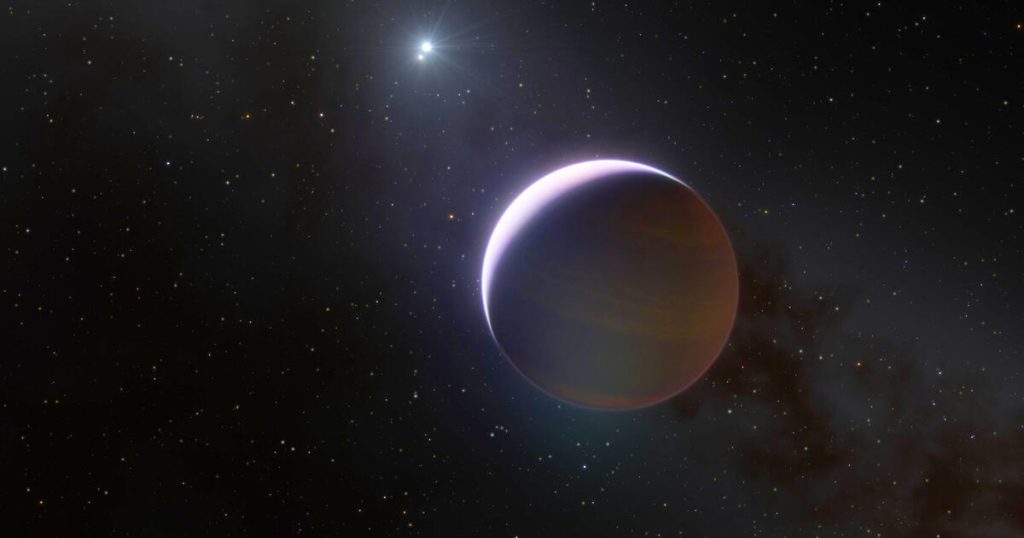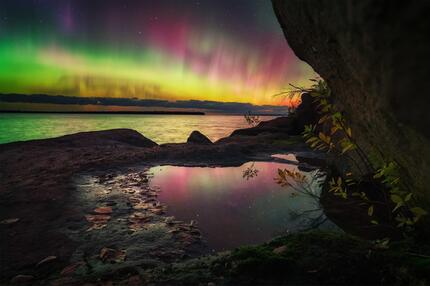Updated December 10, 2021 at 4:00 PM.
- There are not only planets in our solar system, but so far about 5,000 so-called exoplanets have been discovered in other stars.
- Now researchers have discovered a sample that, according to prior knowledge, shouldn’t really exist.
According to the previous belief of astronomers, it should not even exist: an international team of researchers has tracked a giant planet in a wide orbit around a massive double star. These stars are extremely hot, and their radiation should stimulate their formation planets Obstruction.
So the newly discovered celestial body must have arisen in a different way than, say, Planets in our solar systemAccording to researchers in the journal Nature.
The search team searches for planets at greater distances than massive stars
Nearly 5,000 planets in other stars – They are called the outer planets – Astronomers have now proven. “Planets form around stars in a large mass range,” Markus Jansson of Stockholm University and his colleagues explain. But above twice the mass of our Sun, there are fewer and fewer planets.
So far, there is not a single planet known to have stars more than three times the mass of the Sun. Most of the methods celestial researchers use to search for exoplanets are particularly sensitive to planets in very narrow orbits. So it is not yet clear whether massive stars have planets in long orbits.
As part of a special project – “Studying Exoplanet Abundance B” – Janson and his team searched for planets at greater distances than hot, massive stars. To do this, the researchers used SPHERE, a new additional instrument on the European Southern Observatory’s Very Large Telescope in Chile. SPHERE blocks the bright light of the star being examined, making it possible to identify objects in the vicinity that are much less luminous.
A planet 11 times the mass of Jupiter
Scientists have found what they were looking for in the double star Centaurus B, 325 light-years away: They have found a planet 11 times the mass of Jupiter, which moves in an orbit about a hundred times farther from its star than Jupiter. from the sun.
© dpa / ESO / Janson et al.
The total mass of b Centauri is between 6 and 10 solar masses – well above the previous limit. The main star of the system is three times hotter than our Sun, and therefore emits large amounts of ultraviolet and X-rays.
“Stars like this are very destructive and dangerous environments,” Jansson and colleagues said. “This is why it was previously assumed that the formation of large planets there is very difficult. However, our discovery shows that there can be planets with larger stars than we expected based on the extrapolation of previous discoveries.”
However, a companion of Centaurus B must have arisen differently from, for example, Jupiter or the giant planets of lower-mass stars.
The formation of the planet remains a mystery until now
According to the understanding of today’s astronomers, stars consist of clouds of condensed gas. Rotating disks of gas and dust form around young stars, where planets could later form.
But with hot stars like b Centauri, the star’s radiation destroys the disk too quickly for the process. Jansson and colleagues speculate that there may have been an additional dense region in the large gas cloud formed by Centaurus.
Astronomers used to get an idea of what planetary systems should look like in other stars, which were largely related to our own solar system, explains astrophysicist Matthias Samland of the Max Planck Institute for Astronomy in Heidelberg, who was involved in the study: In the past 10 years for many planetary systems in surprising and new configurations, however, it has meant we’ve had to broaden our historically narrow view.”
The discovery of a companion to Centauri now adds another chapter on massive stars to this story. “It’s going to be a great mission to study how this planet formed,” Janson said. Because this is still a mystery at the moment. (ff/dpa)

“Total coffee aficionado. Travel buff. Music ninja. Bacon nerd. Beeraholic.”








More Stories
Researchers detect extremely high-energy gamma rays
Anxiety disorders in old age increase the risk of dementia
Researchers are particularly fascinated by these exoplanets.